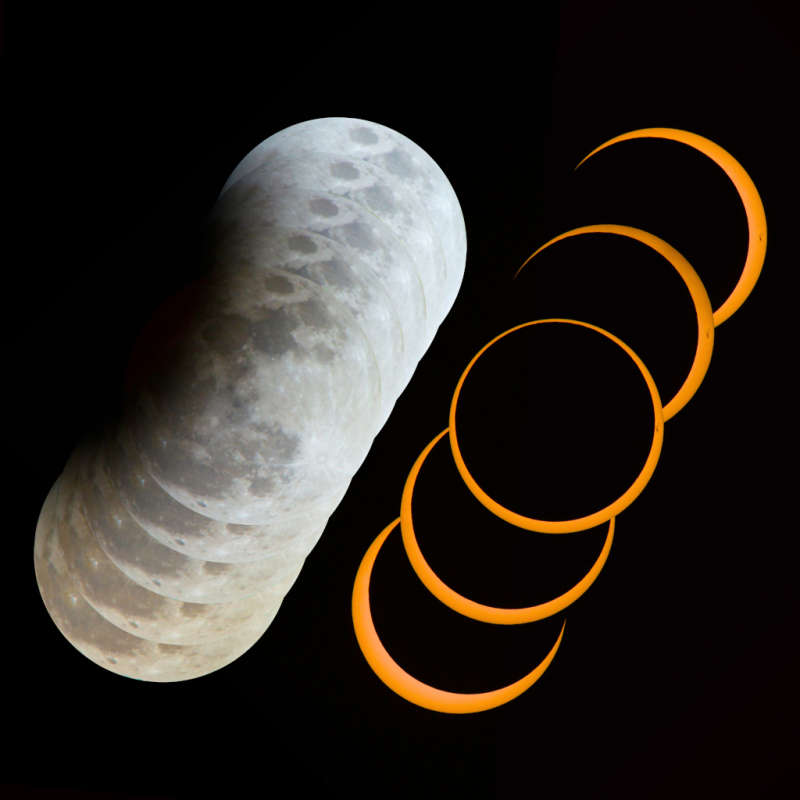Credit & Copyright: Josh Dury
Explanation:
Eclipses
tend to come in pairs.
Twice a year, during an eclipse season that lasts
about 34 days, Sun, Moon, and Earth can nearly align.
Then the full and new
phases of the Moon,
separated by just over 14 days, create a lunar and a solar eclipse.
But only rarely is the alignment at both new moon and full moon
phases during a single eclipse season close enough
to produce a pair with both total (or a total and an annular)
lunar and solar eclipses.
More often, partial eclipses are part of any eclipse season.
In fact, the last eclipse season of 2024 produced
this fortnight-separated eclipse pair:
a partial lunar eclipse on 18 September
and
an annular solar eclipse
on 2 October.
The time-lapse composite images were captured from
Somerset, UK (left) and
Rapa Nui planet Earth.
The
2025 eclipse seasons
will see a total lunar eclipse on 14 March
paired with a partial solar eclipse on 29 March,
and a total lunar eclipse on 8 September
followed by a partial solar eclipse on 21 September.
1999 2000 2001 2002 2003 2004 2005 2006 2007 2008 2009 2010 2011 2012 2013 2014 2015 2016 2017 2018 2019 2020 2021 2022 2023 2024 2025 |
Yanvar' Fevral' Mart Aprel' Mai Iyun' Iyul' Avgust Sentyabr' Oktyabr' Noyabr' Dekabr' |
NASA Web Site Statements, Warnings, and Disclaimers
NASA Official: Jay Norris. Specific rights apply.
A service of: LHEA at NASA / GSFC
& Michigan Tech. U.
|
Publikacii s klyuchevymi slovami:
solar eclipse - Solnechnoe zatmenie - lunar eclipse - lunnoe zatmenie
Publikacii so slovami: solar eclipse - Solnechnoe zatmenie - lunar eclipse - lunnoe zatmenie | |
Sm. takzhe:
Vse publikacii na tu zhe temu >> | |
